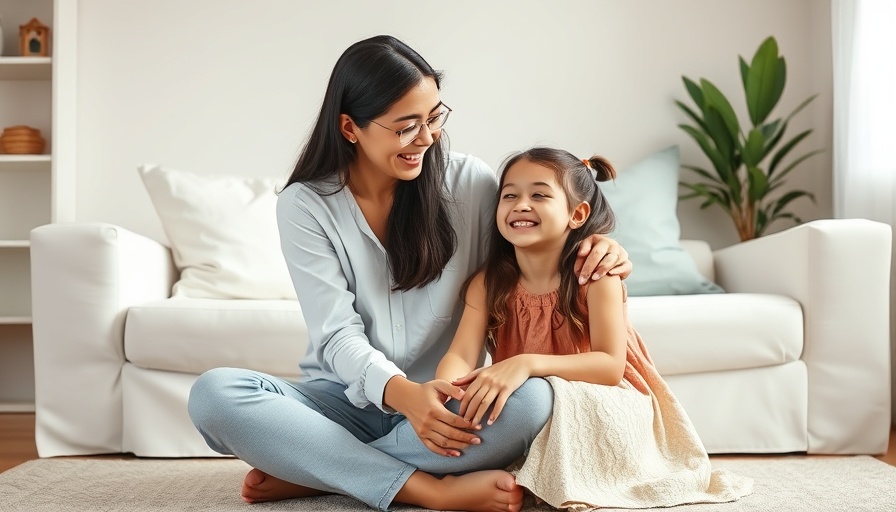
The Importance of Mindfulness in Communication with Kids
When it comes to communicating with children, fostering an environment of mindfulness can create a more effective exchange of thoughts and feelings. Kids are incredibly perceptive; they don’t just listen to what we say, but they also absorb how we say it. Modeling mindfulness, calmness, and kindness in our interactions can significantly influence their learning and emotional well-being. As parents, educators, and caregivers, we have a unique opportunity to guide their emotional development through the language we use and the feedback we provide.
Effective Techniques for Mindful Communication
One of the key strategies in effective communication is the concept of “wise feedback.” This approach aids in encouraging a child’s learning while maintaining their sense of dignity—a crucial balance to strike. By using language that is clear, calm, and kind, we communicate that we see and validate their feelings, rather than simply criticizing them. This not only boosts their self-esteem but encourages them to be more receptive to growth and learning.
For example, rather than saying, "You did that wrong," you might opt for, "I see where you tried to do that. Let’s explore how we can improve together." This small shift in wording can make a significant difference in how a child perceives feedback. Furthermore, creating a Mindful Language Cheat Sheet with effective phrases can serve as a valuable tool for both teachers and parents.
Scientific Evidence Supporting Mindful Communication
Research backs the importance of mindfulness in educational settings. A notable study involving 599 high school students found that those who perceived their teachers as more mindful showed greater development in mindfulness and compassion over time. This illustrates that the way educators communicate with their students can have profound implications for their emotional growth and resilience.
Teachers aren’t required to be deep practitioners of mindfulness to foster an enriching environment; simply embodying the qualities of calmness and kindness is impactful. As participants in the educational journey, how we carry ourselves in moments of communication shapes how kids feel about learning and themselves.
Creating a Mindful Environment at Home
This principle doesn't only apply to teachers; parents can also utilize mindfulness in their conversations with their children. By making mindfulness a shared practice within the home, families create a safe space where children feel comfortable expressing their thoughts. Engaging in mindfulness exercises together, whether through structured activities or simple moments of reflection, allows kids to see mindfulness in action, paving the way for them to cultivate their own practices.
Overcoming Challenges in Mindful Communication
While it might seem simple to approach communication mindfully, various hurdles can arise. Parents and educators may feel rushed, overwhelmed, or stressed, which can lead to reactive and unmindful responses. Acknowledging this reality is the first step toward improvement. By prioritizing better self-care and setting mindful intentions before engaging with children, it becomes easier to model the calmness we wish to impart.
Furthermore, understanding that growth in mindful communication is a journey rather than an immediate goal is essential. Mistakes will happen, but each interaction provides an opportunity for learning both for the adult and the child.
Practical Tips for Practicing Mindfulness with Kids
To wrap things up, here are a few practical tips for incorporating mindfulness into your communications with kids:
- Pause before you respond: Give yourself a moment to breathe and collect your thoughts before replying.
- Use positive language: Frame your feedback positively whenever possible to encourage rather than discourage.
- Practice active listening: Show kids you’re truly listening by maintaining eye contact and acknowledging their feelings.
- Share your own feelings: Open up about your emotions to model vulnerability and connection.
- Embrace imperfection: Remind yourself and the kids that everyone makes mistakes and that's part of growth.
By prioritizing mindful communication, we not only enhance our relationships with children but also empower them to become more mindful individuals themselves. This ripple effect of mindfulness can lead to healthier interactions, greater empathy, and an improved society overall.
As we move forward in our roles as educators and caregivers, let's commit to embracing mindfulness as a guiding principle. This commitment will not only benefit our conversations with kids today but will also help shape their emotional intelligence for the future.
If you're inspired to enhance your communication style, consider implementing some of these mindful practices this week. Whether at home or in the classroom, every small shift can lead to significant changes in our connections with kids.
 Add Row
Add Row  Add
Add 




 Add Row
Add Row  Add
Add 

Write A Comment